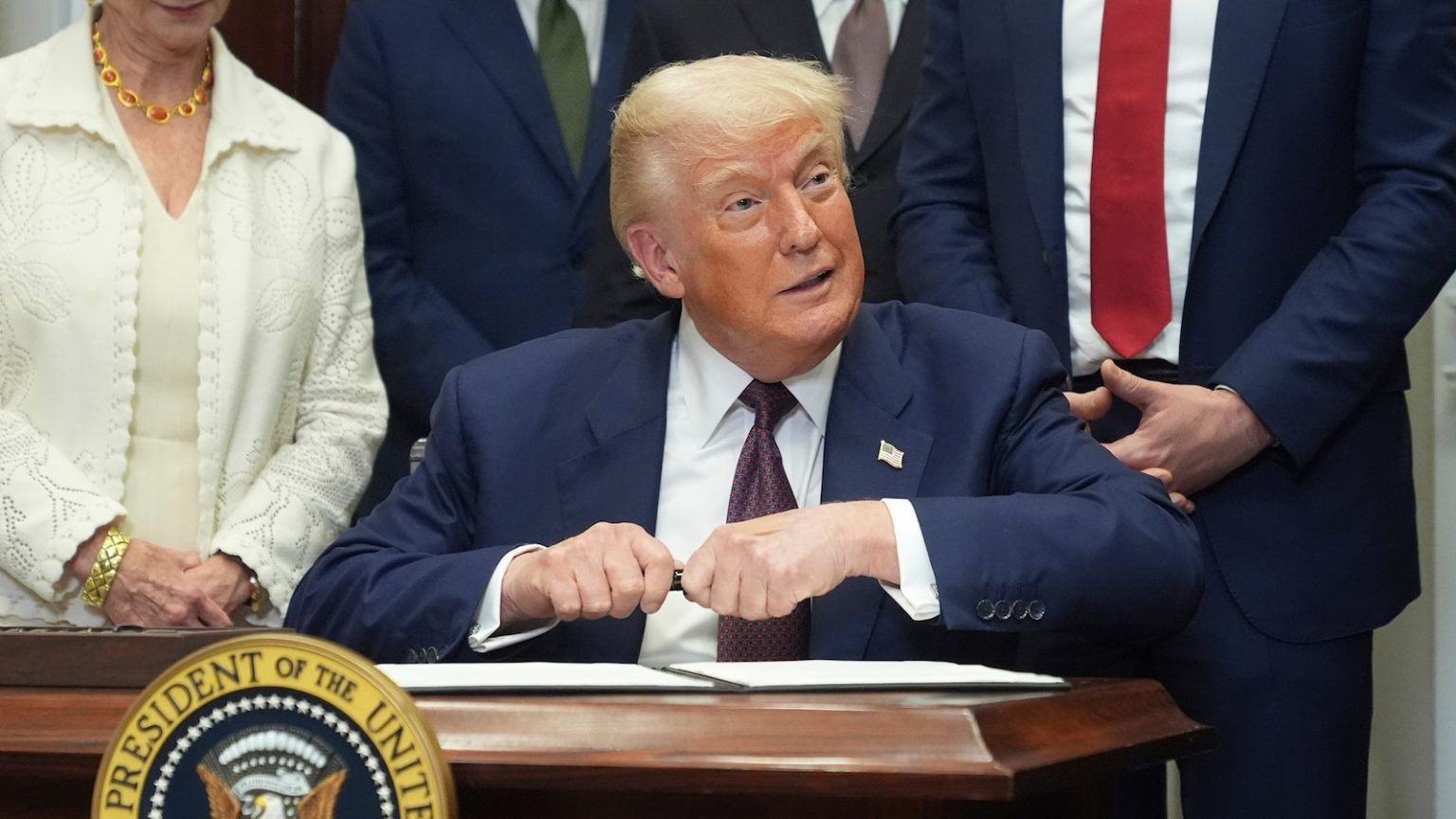U.S. stocks tumbled on Friday in the immediate aftermath of sweeping new tariffs issued by President Donald Trump. A weak jobs report intensified the selloff, as a downward revision of prior estimates indicated a hiring slowdown had begun in May as initial tariffs took hold.
The combination of elevated tariffs and sluggish hiring could hurtle the U.S. toward an economic double-whammy known as “stagflation,” in which the economy slows while prices rise, analysts from Moody’s Analytics, accounting firm EY and Fitch Ratings told ABC News.
Such a prospect could pose a challenge for the Federal Reserve, which risks heating up inflation further if it lowers interest rates or tipping the U.S. into a recession if it raises rates.
The latest jobs data amounts to a “bright red flare that the economy is being hurt by the tariff policy,” Mark Zandi, chief economist at Moody’s, told ABC News. “And that’s before the tariffs are fully implemented.”
Trump’s executive order late Thursday laid out rates to be applied against nearly 70 countries, ranging from 10% to 41% in what a Trump administration official hailed as the beginning of a “new system of trade.” The new duties are now set to go into effect on Aug. 7.
The new levies hiked the average effective tariff rate to 18.3%, the highest since 1934, the Yale Budget Lab said.
The tariffs announced late Thursday came hours before a jobs report on Friday morning showed a marked cooldown in hiring.
The U.S. added 73,000 jobs in July, which came in well below an average of 130,000 jobs added each month this year, according to data from the U.S. Bureau of Labor Statistics (BLS).
The report also provided new estimates for two previous months, significantly dropping the government’s estimate of jobs added in May and June. Over those two months, the U.S. added a combined 33,000 jobs, much lower than a previous estimate of 286,000 jobs, BLS data showed.
Trump fired the BLS commissioner after the jobs report was released on Friday.
“Now we have evidence that indeed job growth has slowed significantly over the past few months,” Gregory Daco, chief economist at accounting firm EY, told ABC News.
The Trump administration described the downward revisions as an unwelcome sign for the U.S. economy.
“Obviously, they’re not what we want to see,” Stephen Miran, chair of the White House Council of Economic Advisors, said on Friday.
Donald Trump signs an executive order restarting the Presidential Fitness Test in public schools, July 31, 2025, in the Roosevelt Room of the White House in Washington.
Jacquelyn Martin/AP
Miran blamed the weak performance in part on uncertainty tied to the fate of Trump’s domestic spending legislation as well as the ultimate outcome of the tariff policy. Congress passed Trump’s spending measure earlier this month; more recently, Trump announced a fresh round of tariffs late Thursday.
“Both of those sources of uncertainty are resolved,” Miran said. “We expect things to get materially stronger from here, now that our policies are starting to sort into place.”
The fluctuating tariffs leave companies with higher tax-related costs alongside continued uncertainty, casting doubt over where expenses will stand from one month to the next, according to EY’s Daco.
In response, many businesses will opt to avoid or delay investment, which risks less hiring and slower consumer spending, he added.
“We should expect a more pronounced slowdown in economic activity over the second half of the year,” Daco added.
The potential cooldown of economic growth may coincide with an uptick of inflation, analysts said, noting that importers typically pass along a share of the tax burden to shoppers in the form of higher prices.
So far, the U.S. economy has defied analysts’ fears of a large, tariff-induced price spike. But tariffs contributed modestly to the rise of inflation last month, analysts previously told ABC News, pointing to a hike in the price of heavily imported items like toys and appliances.
Inflation stands at 2.7%, which is nearly a percentage point higher than the Fed’s target rate of 2%.
Olu Sonola, the head of U.S. regional economics at Fitch Ratings, told ABC News that his firm expects inflation to increase at least an additional percentage point by next year.
In theory, the central bank could help the economy navigate headwinds by adjusting interest rates, but potential stagflation poses difficulty for the Fed.
If the Fed raises interest rates as a means of protecting against tariff-induced inflation under such a scenario, it risks stifling borrowing and slowing the economy further.
On the other hand, if the Fed lowers rates to stimulate the economy in the face of a potential slowdown, it threatens to boost spending and worsen inflation.
“It clearly presents a conundrum for the Federal Reserve going forward,” Sonola said.


